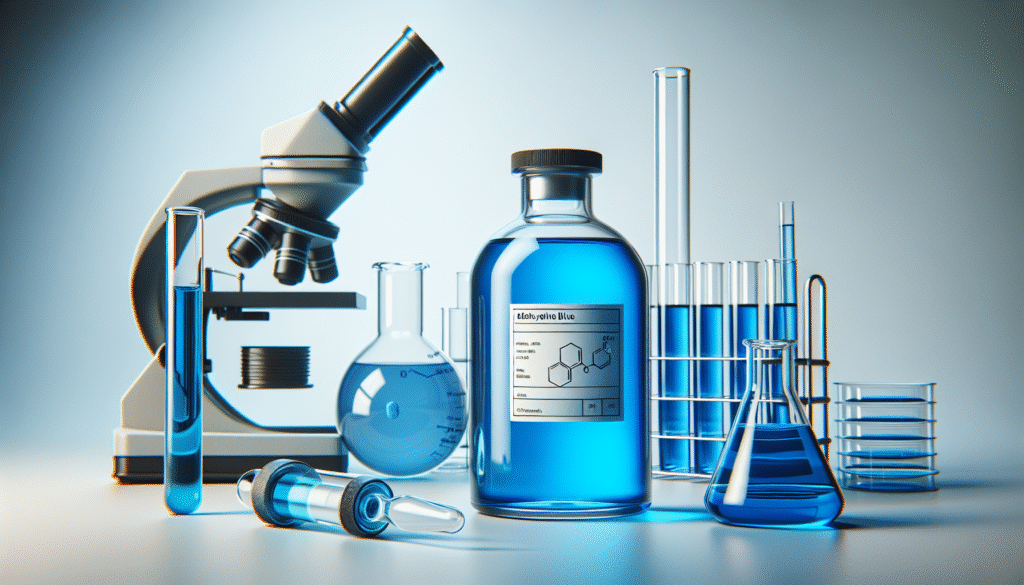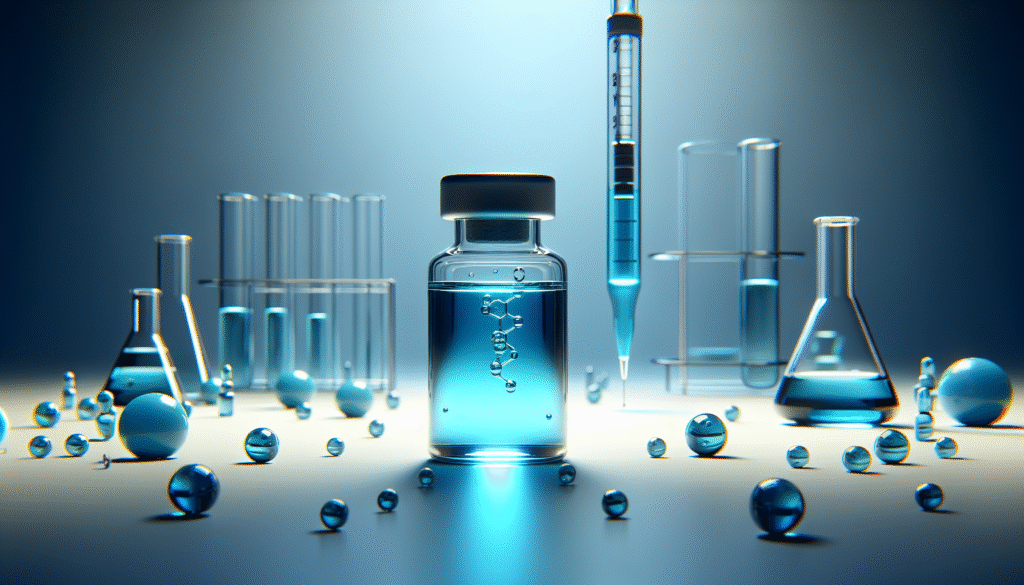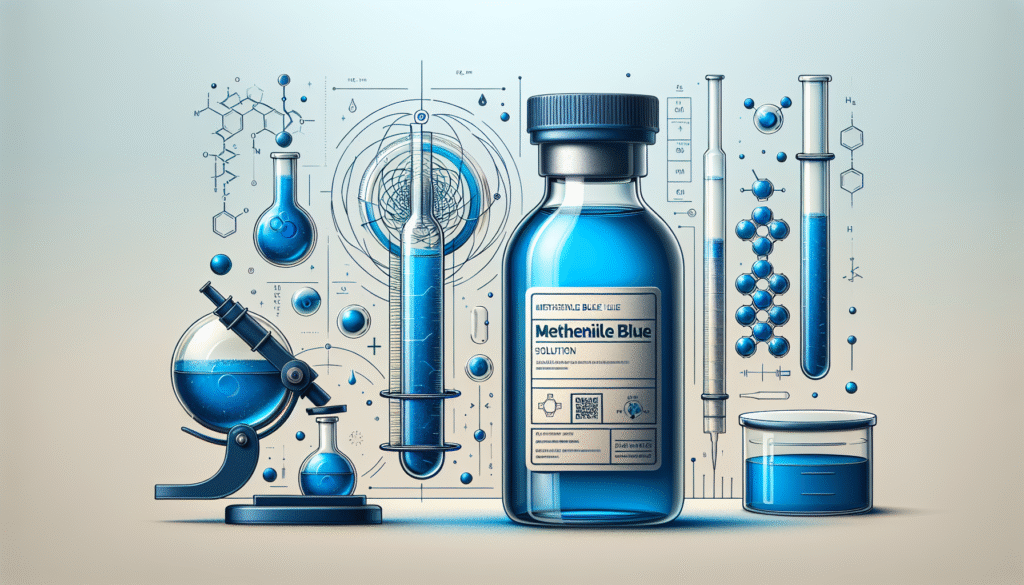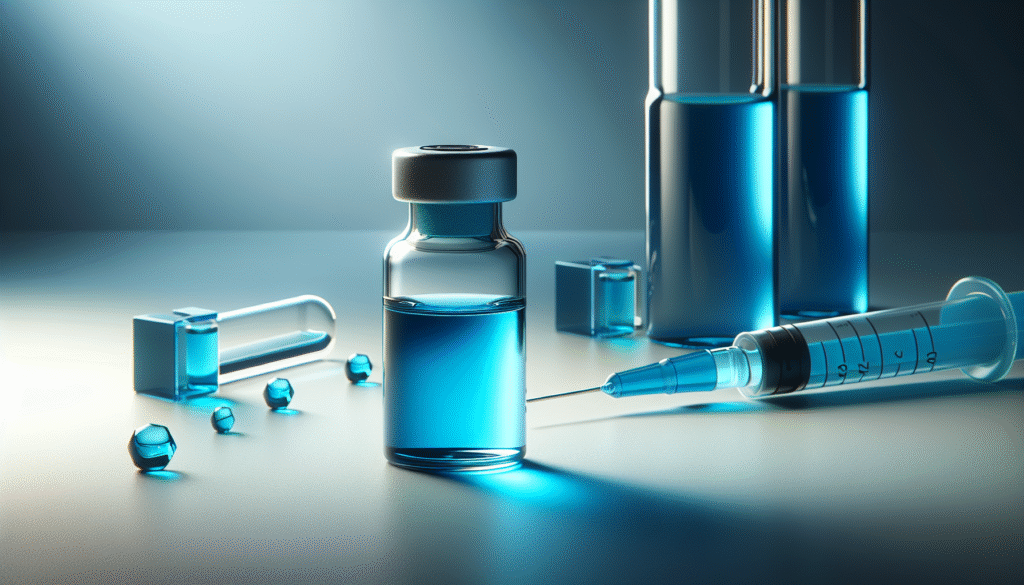
What is the first thought that crosses your mind when you hear the term “Methylene Blue”? Is it the striking blue color, or perhaps its applications in various fields? Understanding Methylene Blue is essential, not only for those in scientific and medical professions but also for anyone interested in its diverse functionalities and mechanisms.
Understanding Methylene Blue
Methylene Blue (MB) is not just a dye; it is a compound with a multifaceted history and diverse applications. Initially discovered in the 19th century, it has since found its place in various sectors, including medicine, biology, and even histology. This compound is a synthetic dye that appears as a blue crystalline powder and has become much more than just a colorant.
Chemical Composition and Properties
Methylene Blue is scientifically known as 3,7-bis(dimethylamino)phenothiazin-5-ium chloride. Its molecular formula is C16H18ClN3S, and it has a molecular weight of approximately 319.85 g/mol. The stability of Methylene Blue in various conditions contributes to its versatility. Typically, it is soluble in water, which is a critical factor in its large array of uses.
Understanding the properties of Methylene Blue can help you appreciate its function better. Its ability to absorb light at specific wavelengths enables it to be used as a dye in laboratory settings, as well as in clinical applications.
Historical Context
Methylene Blue was first synthesized in 1876 by Heinrich Caro, and it was initially utilized as a dye for textiles. However, within a few years, its potential as a medication was recognized. It was one of the first synthetic drugs used to treat malaria in the early 20th century, marking its entry into the field of medicine. This historical context reiterates not only the significance of Methylene Blue but also the ever-evolving nature of pharmaceuticals.

Applications of Methylene Blue
Methylene Blue has garnered attention in a range of fields, from medicine to microbiology. Its versatility makes it a relevant subject across various disciplines.
Medical Uses
The medical applications of Methylene Blue are perhaps the most recognized. It can be categorized into several areas:
Antimicrobial Agent
In clinical settings, Methylene Blue has been acknowledged for its antimicrobial properties. It has demonstrated effectiveness against several bacteria and fungi, thus gaining traction for treating infections.
Antidote for Methemoglobinemia
One of the most critical uses of Methylene Blue is its role as an antidote for methemoglobinemia, a condition where hemoglobin is altered and cannot effectively carry oxygen. In such cases, you would administer Methylene Blue intravenously, which helps revert methemoglobin back to hemoglobin, restoring oxygen transport in the body.
Dye in Medical Imaging
Methylene Blue is also utilized in various diagnostic procedures. For instance, it is used in surgical settings to stain tissues, enabling better visualization during procedures. It’s especially useful in urologic surgeries and lymphatic mapping.
Laboratory Uses
Beyond its medical applications, Methylene Blue is a valuable tool in laboratory settings as well. Some common uses include:
Staining in Histology
In histology, Methylene Blue is a vital staining agent. It highlights specific cellular components, allowing researchers to observe structures under a microscope better. This is crucial for understanding cellular behavior, pathology, and morphology.
Redox Indicator
Methylene Blue serves as a redox indicator in various chemical reactions. Its color change—from blue to colorless—upon reduction provides visual evidence of chemical processes, which is instrumental in chemical education and experimentation.
Environmental Uses
Methylene Blue is not confined to laboratories and hospitals; it also plays a role in environmental applications:
Water Treatment
Historically, it has been employed in water treatment processes. Its ability to bind to certain contaminants makes it beneficial in reducing pollutants, thus contributing positively to ecological efforts.
Phytotoxicity Studies
Researchers utilize Methylene Blue to study phytotoxicity, observing how toxins affect plant growth. This type of research is significant in agriculture and environmental sustainability.

Mechanisms of Action
Understanding how Methylene Blue works is crucial to comprehending its broad spectrum of applications. The mechanisms of action are complex and multifaceted.
Inhibition of Cytochrome c Oxidase
Methylene Blue acts as an electron donor in cellular respiration. It interacts with cytochrome c oxidase, a component of the respiratory chain in mitochondria. By donating electrons, it can assist in the production of ATP, making it effective in conditions where mitochondrial function is compromised.
This ability is particularly relevant in cases of neurodegenerative diseases, where mitochondrial dysfunction often plays a critical role. Methylene Blue shows promise in enhancing cognitive function and reducing oxidative stress, hence its exploration in conditions such as Alzheimer’s Disease.
Reduction of Methemoglobin
As previously noted, Methylene Blue excels at treating methemoglobinemia. It reduces methemoglobin back to its functional form by facilitating electron transfer. This process clears harmful methemoglobin from circulation, restoring the blood’s oxygen-carrying capacity.
Antioxidant Properties
Another mechanism worth discussing is Methylene Blue’s antioxidant capability. It helps neutralize free radicals, potentially mitigating oxidative damage. This property is significant in a variety of health conditions where oxidative stress is implicated.
Photoactivation
Methylene Blue can undergo a photochemical reaction when exposed to light, producing reactive oxygen species (ROS). This mechanism is applied in photodynamic therapy, showing promise in cancer treatment by selectively killing malignant cells upon illumination.

Safety and Side Effects
While Methylene Blue has proven beneficial across various applications, like any other compound, it comes with safety considerations and potential side effects.
Contraindications
It’s essential to understand the situations where Methylene Blue usage is contraindicated. Patients taking selective serotonin reuptake inhibitors (SSRIs) may experience significant interactions, potentially leading to serotonin syndrome, a life-threatening condition.
Common Side Effects
In terms of side effects, Methylene Blue can cause:
- Nausea
- Vomiting
- Headaches
- Urine discoloration
Generally, these effects are mild and temporary. However, a healthcare provider’s monitoring is vital during administration.
Precautions
Precautions should always be taken when administering Methylene Blue, particularly in pediatric patients or those with renal impairment. Dosage adjustments and close observation can mitigate risks.

Future Directions
As research continues, the potential applications and implications of Methylene Blue widen significantly. Its relevance in medicine, biology, and environmental science is being increasingly recognized.
Innovations in Medicine
Future studies aim to further explore Methylene Blue’s role in neuroprotection and cognitive enhancement. Investigations into its applications in treating other conditions like sepsis and depression are developing rapidly, providing promising avenues for new therapeutic interventions.
Green Chemistry
With the world increasingly leaning towards sustainability, Methylene Blue’s role in environmental applications could see further expansion. Its effectiveness in water treatment and contaminant reduction plays into a larger narrative concerning ecological preservation and safety.
Nanoparticle Development
The development of Methylene Blue nanoparticles presents an innovative direction. These minimize side effects while maximizing efficacy, especially in photodynamic therapy for cancer treatment. The future holds significant promise as researchers create new formulations and delivery methods.

Conclusion
Understanding Methylene Blue enriches your perspective on chemistry, medicine, and environmental science. Each application unveils a layer of complexity, underscoring the importance of this compound. Whether used for medical treatments, laboratory inquiries, or ecological solutions, Methylene Blue embodies versatility, safety considerations, and future potential.
Your engagement with Methylene Blue is more than a surface-level appreciation of its color; it invites you into a world where science meets practicality. As research progresses, the future may not only hold innovation but also renewed expectations for what Methylene Blue can achieve in improving health and environmental outcomes.
In your understanding of this compound, you encapsulate not just a historical narrative but a gateway to future discoveries and applications. The exploration of Methylene Blue continues, and its impact is sure to resonate well into the future.